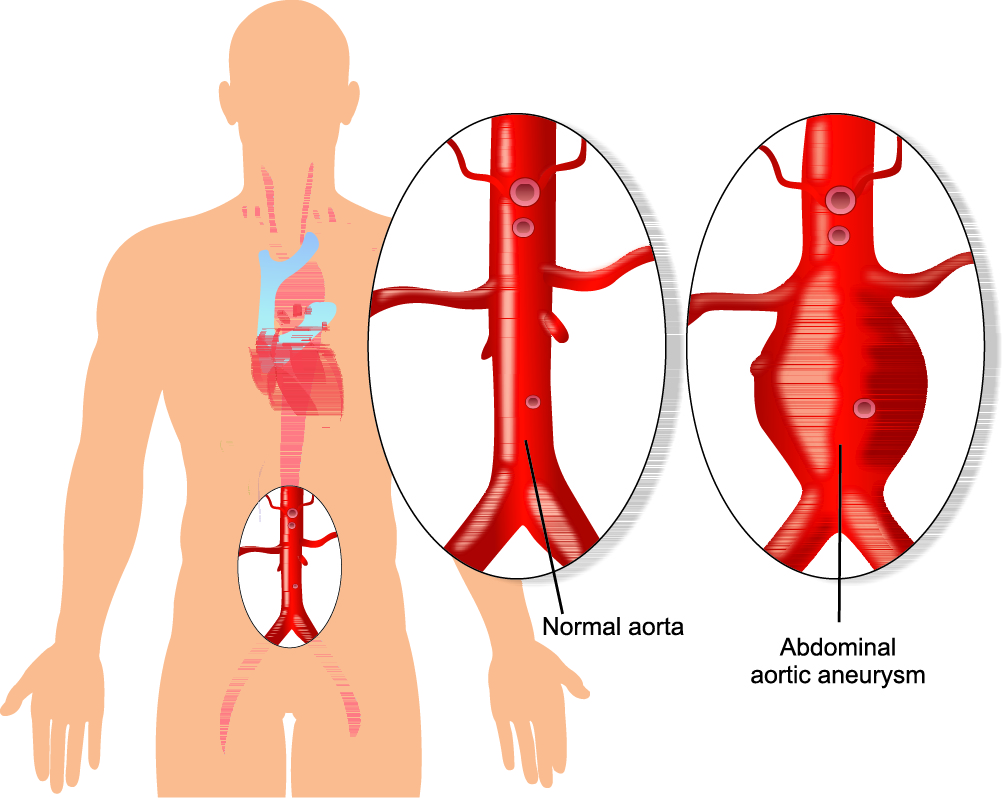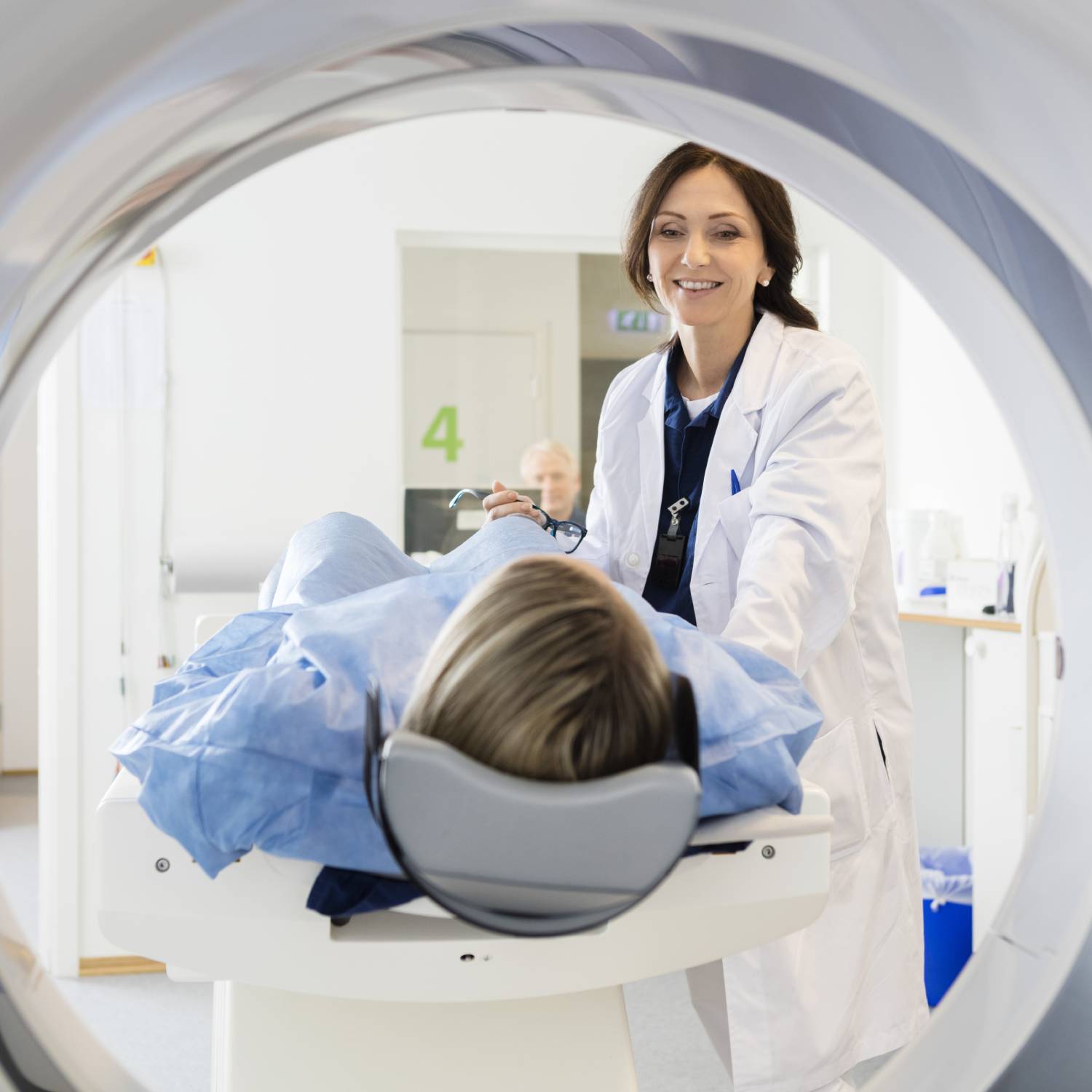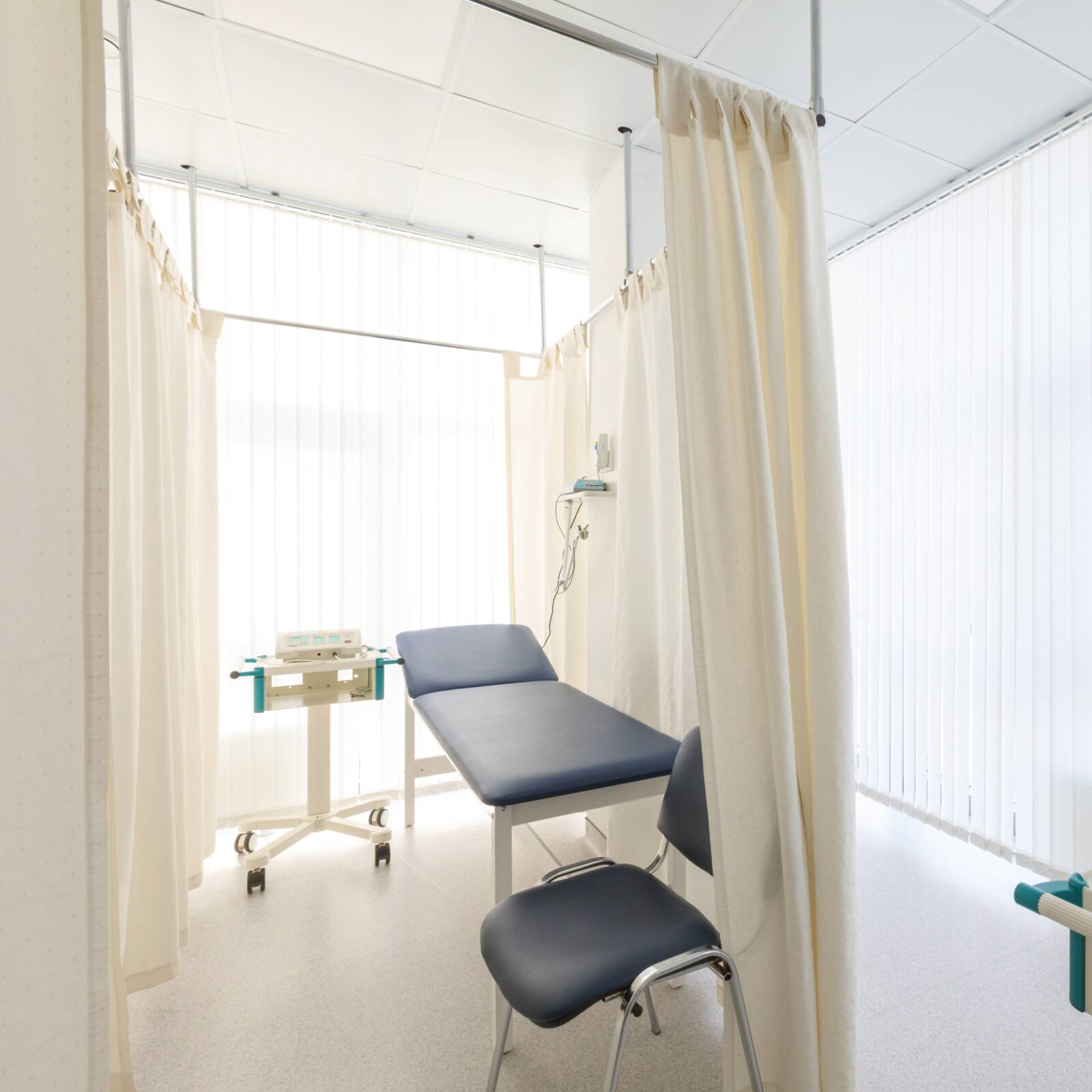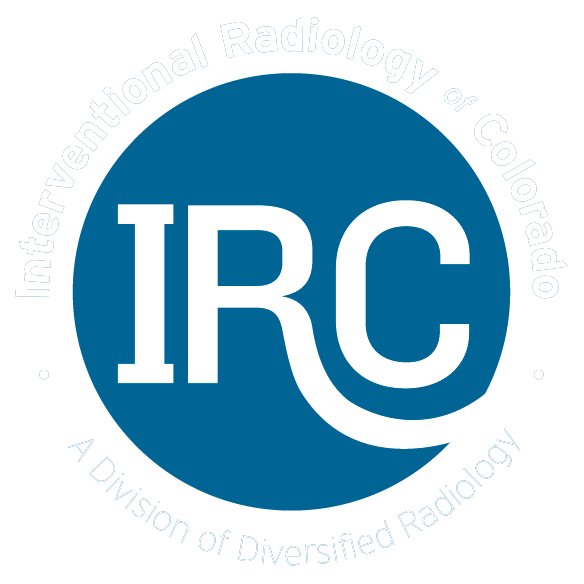What is an Abdominal Aortic Aneurysm?
An aortic aneurysm is a bulge in the aorta, a large blood vessel that carries blood from the heart to the rest of the body. Abdominal aortic aneurysms occur below the chest, while thoracic aortic aneurysms occur within the chest.
If left untreated, an abdominal aortic aneurysm can leak or burst, causing internal bleeding. Because the aorta is the body’s largest blood vessel, this bleeding can be fatal. The pain caused by abdominal aortic aneurysms can also be debilitating, leading to a significant reduction in quality of life.
Symptoms of Abdominal Aortic Aneurysm
Many people with abdominal aortic aneurysms experience no symptoms. For those who do, symptoms can include:
- Deep, throbbing pain in the belly or side
- Back pain
- Pain in the legs, groin, and buttocks
- A pulse near the belly button

Risk Factors for Abdominal Aortic Aneurysm
Smoking is one of the greatest risk factors for abdominal aortic aneurysms, along with atherosclerosis (hardened arteries), high blood pressure, and high blood cholesterol.
Aortic aneurysms can be present from birth and often run in families. Other conditions can also make it more likely to develop an aortic aneurysm, such as Marfan Syndrome or Ehlers-Danlos Syndrome.
Treatments for Abdominal Aortic Aneurysm
Because each abdominal aortic aneurysm is different, treatment can vary. Small aortic aneurysms that aren’t growing may be closely monitored and treatment will consist of lifestyle changes to reduce the risk of growth, such as lowering blood pressure. If the aneurysm is large, growing quickly, or bleeding, surgery to repair or replace the damaged aorta is the best treatment.
Surgical options include open surgery, during which the surgeon removes the damaged section of the aorta and replaces it with a graft, and endovascular aneurysm repair. A less invasive option is endovascular aneurysm repair. Instead of creating a large incision near the damaged section of the aorta, a small incision is made in the femoral (groin) artery. The Interventional Radiologist inserts a stent into the artery and uses imaging technology to guide it through the artery to the damaged aorta. The stent is then placed in the damaged section, attaching itself to the walls of the aorta and supporting the bulging area.
The biggest benefit of endovascular aneurysm repair over open surgery is that it requires only a small incision in the body, leading to a quicker recovery time, less pain, and lower risk. This means patients can get back to doing what they love sooner and don’t have to risk major surgery just to improve their quality of life.
If you’d like to see if endovascular aneurysm repair is the right choice for you, reach out to our team to schedule an appointment. Our expert interventional radiologists are here to help you feel better without the trouble of major surgery.












